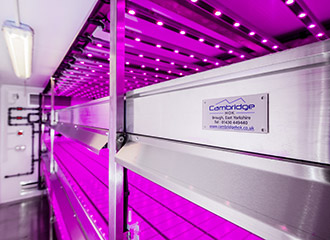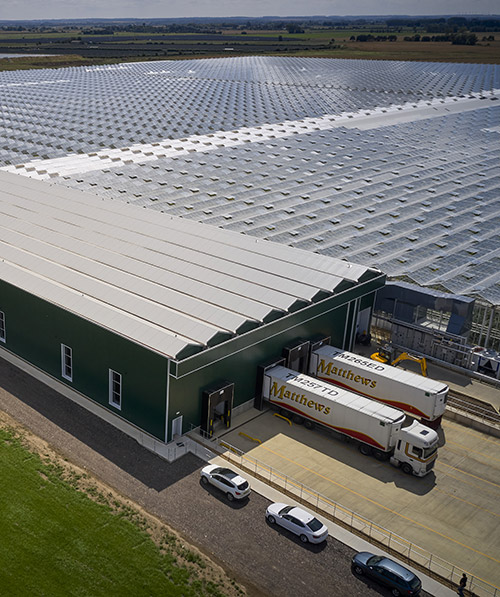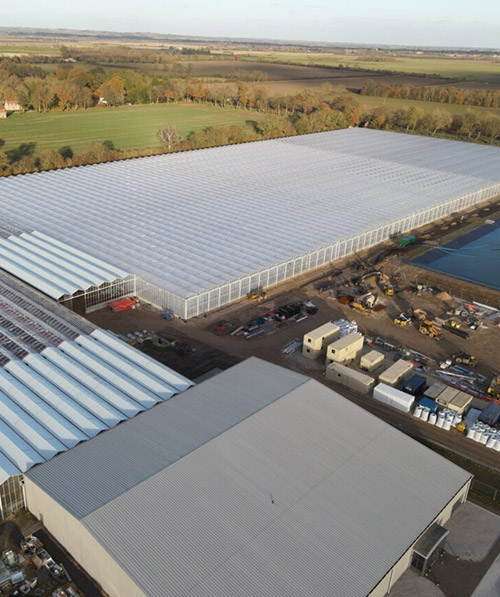Call Today 01430 449440
How much does vertical farming cost?
Indoor food production has long-been cited as the ideal way to help feed an ever-growing population.
Currently, vertical farming is increasingly being seen as the way forward to produce higher volumes of better-quality crops all year round, bring food production closer to customers, and into urban areas.
For leafy produce growers, a move to vertical farming can massively reduce the reliance on conventional farming methods - which are affected by the weather - and ensure consistent, quality crops to keep customers happy.
The key, of course, is to ensure the vertical farming costs and business case stacks up. In recent years, this is why people have increasingly sought out the expertise of our team.
This in-depth article will try to explain how and why we help - including detailed insights into:
- Vertical farming start-up costs
- Why indoor farming is taking off
- The realistic profits achievable
- Why the industry's future is bright
Should you require more information - or if you'd benefit from more advice, please call 01430 449440 for an informal discussion.
Are vertical farming start-up costs expensive?
There's no hiding away from the fact that the upfront capital required to design and establish a vertical farm is substantial.
At the start of 2022, we had completed the design and build of 10 vertical farms in various worldwide locations.
However, the potential long-term future growth and profits offered by being at the forefront of this developing market is making it an attractive proposition for those with funds to invest.
To date, high-profile investors like Jeff Bezos (Amazon) and Eric Schmidt (Google) have invested heavily in this fast-developing technology - and have been joined by various global Private Equity firms.
In recent years, our vertical farming experts have been fielding an increasing number of enquiries from both growers and potential investors. As such, we have even been able to connect parties with a view to forming a vertical farming partnership.
Whilst vertical farming start-up costs are high, the long-term benefits are increasingly being recognised and appreciated by everyone involved in the food supply chain - including retailers.
Thankfully, technological advances and new innovations are continually helping to reduce capital costs and ongoing overheads.
In our experience, the more you can automate the process, the better. That’s why we have partnered with SEC Automation, a leader in the warehouse and logistics industry, to determine whether a vertical farm needs to operate with low automation, semi-automation or full automation.
Obviously, capital costs go up because of the initial expenditure on automation, but the fact less people are needed means operating costs come down. Automation can also provide a cleaner crop because of the reduced contact between humans and crops.
In the long term, we believe automation will make indoor vertical farming an attractive investment for existing growers who wants to adopt a successful strategy for increasing the volume of their high-quality product.
In our experience, there are three basic levels for vertical farming*:
Level 1
Up to 500sqm - costing from around £1,200-£1,400 per sqm: A vertical farm which is more reliant on manual labour for watering and harvesting rather than technology.
Level 2
500sqm to 2,000sqm - costing from around £1,400-£2,000per sqm (depending on level of technology): A warehouse style vertical farm which requires manual labour for sowing and harvesting. Watering and cultivation are automated to create a ready-to-eat product.
Level 3
2,000sqm to 10,000m2 or more - costing from around £1,750-£2,250 per sqm (depending on level of technology): A fully-automated vertical farm (with more stacks) which uses the latest technology to automatically seed, feed and harvest the produce. Minimal man-power is required and all produce will be clean and ready to eat.
It is in this bracket where the need to adopt automation to reduce operational costs and manage the logistics become essential. As a result, the Capex of automation is commensurate with the handling capacity it needs to deliver. You do not buy a high-cost car and only use it for 20 minutes a day, so there is always a trade-off between Capex and Opex and ROI in this level 3.
*PLEASE NOTE: All the above vertical farming costs are provided for guide purposes only. The exact price of a project varies depending on several factors - including size, location, available energy source and final design. Costs can reduce on larger projects because of economies of scale.
For a full consultation and tailored quote, please call 01430 449440 - we'll be happy to discuss your best vertical farming options.
How much capital investment does a vertical farm need?
To deliver a successful commercial vertical farm, we believe a minimum grow space of around 5,000sqm is required.
It’s easy to design and build a smaller-scale vertical farm, as we have in the past, but our analysis shows a minimum of 5,000sqm is the optimum size for commercial viability.
At the start of 2022, we launched our vertical farm ‘Concept’ which is geared towards people who are really serious about investing in the future of the industry because they can see its potential scale and ROI.
For a capital investment of around £10-15million, we can deliver a vertical farm with a strong financial model and analysis which makes it easy for investors to understand what they could achieve.
Designed to be developed modularly, so that larger economies of scale can be achieved over time, our role is to act as a technology provider and one-stop shop during design and build process. One contractor. One point of contact. One huge step into an exciting futuristic industry.
Why is vertical farming taking off?
By the year 2050, it's estimated that global food production will need to increase by around 70 per cent in developed countries to keep up with current consumption trends.
In the UK, nearly half of the food we consume is imported. Almost 75 per cent of our available agricultural land is also already utilised.
If the UK fails to adopt new growing techniques, achieving the 70 per cent uplift could prove extremely difficult without destroying greenbelt land to turn it into new farmland.
Growers who see high-value crops put at risk because of adverse and unpredictable weather variations (rainfall, light, wind etc) are also beginning to appreciate that the switch to vertical farming can remove the uncertainty posed by nature.
With increased climate variability affecting production levels, it's no wonder new methods of food production are attracting significant funds for research, development and investment.
In the next five years, we believe our ‘VF Concept’ will appeal to retailers, growers and investors – by helping them to have a safe, reliable and deliverable system which is underpinned by knowledge, data and financial support.
A lot of growers are now facing climate change issues that are causing problems for fresh, field-grown produce. If someone already has an existing supply chain into the retail and the food services sector, our model will appeal because it could help to deliver improvements in food security.
What profit can a vertical farm achieve?
Having recognised that global food production must increase to improve domestic food security, vertical farming is attracting widespread interest from individual investors and Private Equity firms who are now willing to take a long-term view.
According to our detailed financial modelling, the profit margins which are achievable for certain fresh produce means that the initial capital investment could be repaid within a sensible timeframe.
Combine the potential long-term returns with an increased desire to improve domestic food security and it’s easy to see why vertical farming is now attracting widescale interest.
As a result of this sustainable profitability, many more growers are now producing thousands of vertically-farmed products which are cleaner, better quality - and competitively priced for consumers.
What does the future hold for indoor farming?
Obviously, the decision whether to make the vertical faming switch depends on many different factors - including location, product type, human resources, potential profit levels and access to investment capital.
Whilst new hydroponic growing techniques will never completely replace all traditional methods, the fact they're now being used as a way to complement them is a massive step forward for the agricultural industry.
Of course, to make vertical farming an economically viable way to grow crops, it's important to keep a tight control on water and energy costs.
At the start of 2022, with the global energy crisis continuing to tighten its grip, farmers and growers are beginning to seriously think about their dependence on traditional energy sources.
Concerned about astronomical price rises, they are now exploring renewable alternatives and trying to work out how to become more energy efficient.
Increased energy prices are also a major cause for concern within the vertical farming industry.
From our perspective, the key is to focus on finding a direct-supply energy source to minimise the reliance on traditional energy in order to make significant savings on grid tariffs and costs.
Whether that be via co-location next to an existing energy-producing source or business, or the installation of a renewable sources like solar power, heat pumps or a biomass boiler, our experts can offer help and advise about the best route to take.
All our indoor growing experts passionately believe that vertical farming has the ability to increase production and minimise land use, which will be of massive value to society in the long term.
As the global demand for food continues to rise, we have no doubt this controlled environment agriculture will present a unique opportunity because of its ability to grow higher-quality food which is both sustainable and profitable.
By Tim Haworth, Head of Technical Horticulture - Article updated: May 9, 2022
Discover more about vertical farming
To learn whether vertical farming could be right for you, please email [email protected] or call 01430 449440 for an informal discussion.

Call us to speak to a member of our team or complete the enquiry form and we will get back to you
- 01430 449440
- [email protected]
- Wallingfen Park
236 Main Road
Newport, Brough
East Yorkshire
HU15 2RH












